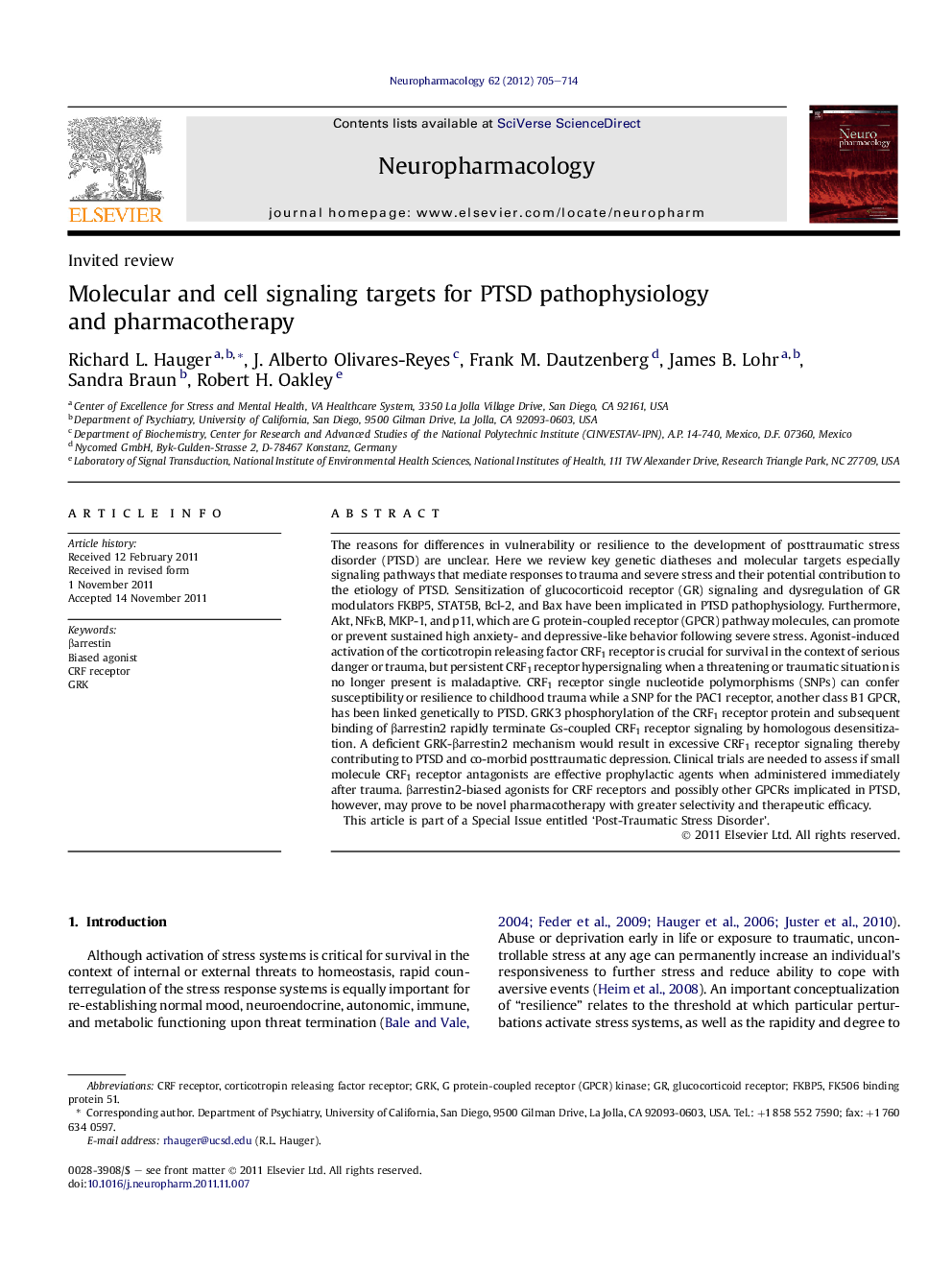| کد مقاله | کد نشریه | سال انتشار | مقاله انگلیسی | نسخه تمام متن |
|---|---|---|---|---|
| 2493768 | 1115528 | 2012 | 10 صفحه PDF | دانلود رایگان |

The reasons for differences in vulnerability or resilience to the development of posttraumatic stress disorder (PTSD) are unclear. Here we review key genetic diatheses and molecular targets especially signaling pathways that mediate responses to trauma and severe stress and their potential contribution to the etiology of PTSD. Sensitization of glucocorticoid receptor (GR) signaling and dysregulation of GR modulators FKBP5, STAT5B, Bcl-2, and Bax have been implicated in PTSD pathophysiology. Furthermore, Akt, NFκB, MKP-1, and p11, which are G protein-coupled receptor (GPCR) pathway molecules, can promote or prevent sustained high anxiety- and depressive-like behavior following severe stress. Agonist-induced activation of the corticotropin releasing factor CRF1 receptor is crucial for survival in the context of serious danger or trauma, but persistent CRF1 receptor hypersignaling when a threatening or traumatic situation is no longer present is maladaptive. CRF1 receptor single nucleotide polymorphisms (SNPs) can confer susceptibility or resilience to childhood trauma while a SNP for the PAC1 receptor, another class B1 GPCR, has been linked genetically to PTSD. GRK3 phosphorylation of the CRF1 receptor protein and subsequent binding of βarrestin2 rapidly terminate Gs-coupled CRF1 receptor signaling by homologous desensitization. A deficient GRK-βarrestin2 mechanism would result in excessive CRF1 receptor signaling thereby contributing to PTSD and co-morbid posttraumatic depression. Clinical trials are needed to assess if small molecule CRF1 receptor antagonists are effective prophylactic agents when administered immediately after trauma. βarrestin2-biased agonists for CRF receptors and possibly other GPCRs implicated in PTSD, however, may prove to be novel pharmacotherapy with greater selectivity and therapeutic efficacy.This article is part of a Special Issue entitled ‘Post-Traumatic Stress Disorder’.
► Dysregulated FKBP5, STAT5B, and Bcl-2 interaction with GR may be involved in PTSD.
► Akt, NFκB, MKP-1, and p11 may mediate anxiety and depressive responses to stress.
► CRF1 and PAC1 receptor pathway interactions may contribute to PTSD pathophysiology.
► High CRF release and excessive Gs-coupled CRF1 receptor signaling induces severe anxiety after stress.
► Deficient GRK-βarrestin2 desensitization of CRF1 receptors may contribute to PTSD.
Journal: Neuropharmacology - Volume 62, Issue 2, February 2012, Pages 705–714